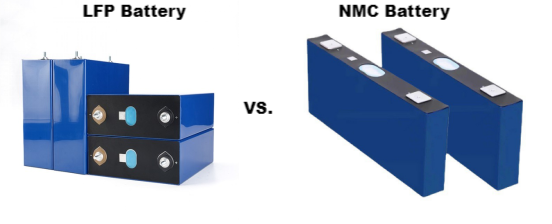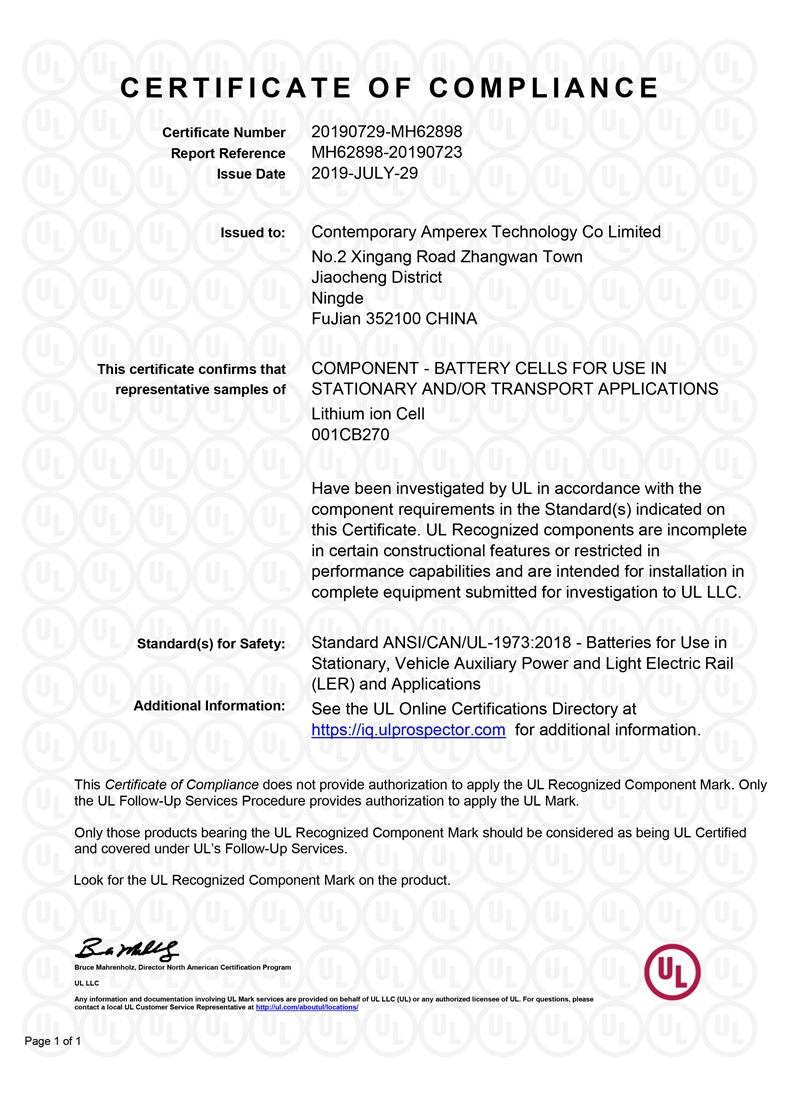Blog
LFP Battery vs. NMC Battery: Which One Is the Ultimate Choice for Your Energy Needs?
2025-08-11 | Calvin

Lithium-ion batteries have revolutionized energy storage and electric transportation, but with several types available, choosing the right battery can be challenging. Two of the most popular lithium-ion battery chemistries today are Lithium Iron Phosphate (LFP) and Nickel Manganese Cobalt (NMC) batteries. Each has unique strengths and weaknesses that make them suitable for different applications. This article provides an in-depth comparison of LFP and NMC batteries to help you decide which one fits your needs best.
What Are LFP and NMC Batteries?
Understanding LFP Batteries
LFP batteries use lithium iron phosphate (LiFePO4) as the cathode material. With a nominal voltage of approximately 3.2 volts, they are widely favored for their exceptional safety and chemical stability. This makes them a common choice for residential energy storage, solar photovoltaic (PV) systems, and various industrial applications.
Understanding NMC Batteries
NMC batteries employ a cathode made from a blend of nickel, manganese, and cobalt, combined with a graphite anode. Their nominal voltage is higher, around 3.7 volts. Thanks to their superior energy density and performance, NMC batteries dominate the electric vehicle (EV) market, powering models from industry leaders like Tesla and BYD.
Key Differences Between LFP and NMC Batteries
1. Price Comparison
Cost is a major consideration for many buyers. Generally, NMC batteries tend to be more expensive due to the higher costs of nickel and cobalt. In contrast, the raw materials for LFP batteries — iron and phosphate — are abundant and less costly. However, LFP batteries involve a more complex manufacturing process, which narrows the price gap. On average, LFP batteries are approximately 20% cheaper than NMC batteries for the same capacity.
2. Energy Density and Performance
NMC batteries excel in energy density, offering more power per unit weight and volume. This translates into better acceleration and longer range in electric vehicles. Conversely, LFP batteries provide lower energy density but excel in long-term energy storage applications where capacity and safety take precedence over peak performance.
Summary:
- NMC: Higher energy density, better for performance-focused applications (e.g., EVs)
- LFP: Lower energy density, superior for stationary energy storage and longevity
3. Temperature Tolerance
Battery chemistry impacts how well the battery performs under temperature extremes:
- NMC batteries handle a wider temperature range more evenly, functioning reliably in both low and high temperatures.
- LFP batteries offer superior high-temperature tolerance but experience performance degradation in cold conditions. At 0°C, LFP battery capacity can drop by 10-20%, and at -20°C, performance falls to about 60% of normal.
This makes LFP batteries less ideal for cold climates but safer in hotter environments.
4. Safety Considerations
Safety is a critical factor for any battery system:
- LFP batteries are known for their excellent thermal stability and are highly resistant to overheating, fire, or explosion, even under severe physical abuse.
- NMC batteries carry a higher risk of thermal runaway, especially under high-temperature stress, which has led to concerns regarding fire hazards in some applications.
5. Cycle Life and Durability
Cycle life determines how many charge/discharge cycles a battery can endure before its capacity significantly diminishes.
- LFP batteries typically last between 3,000 and 6,000 cycles, offering an impressive lifespan.
- NMC batteries usually last around 800 cycles, depending on usage conditions.
This substantial difference highlights LFP batteries’ advantage in longevity and durability.
6. Service Life
In practical terms:
- A well-maintained LFP battery can last over 10 years, making it highly cost-effective for long-term applications.
- NMC batteries often last 2 to 3 years in high-demand scenarios like EVs, requiring replacement sooner.
Which Battery Should You Choose? The Verdict
Both LFP and NMC batteries bring distinct advantages to the table. Choosing the right one ultimately depends on your specific application and priorities:
| Criteria | LFP Battery | NMC Battery |
|---|---|---|
| Safety | Superior | Moderate |
| Energy Density | Moderate | High |
| Cost | Lower | Higher |
| Cycle Life | 3,000–6,000+ cycles | ~800 cycles |
| Temperature Range | Better high-temp tolerance, weaker cold tolerance | Balanced temperature tolerance |
| Typical Use Cases | Energy storage, residential, industrial | Electric vehicles, performance-demanding devices |
In summary:
- Choose NMC batteries if you prioritize high performance and energy density, such as for electric vehicles or portable electronics.
- Opt for LFP batteries when you need maximum safety, longevity, and cost-effectiveness, especially for stationary energy storage or solar systems.
For everyday consumers and DIY energy storage enthusiasts, LFP batteries remain the top recommendation due to their robust safety profile and long service life.
Ready to Make the Right Battery Choice?
If you're considering upgrading your energy system or EV battery pack, understanding these key differences will help you select the perfect battery chemistry for your needs. Explore our range of LFP and NMC batteries to find the best solution that balances safety, performance, and value.
Contact us today for expert advice and tailored battery solutions that power your future efficiently and reliably!
- Next:The Ultimate Guide to Storing Your LiFePO4 Battery Safely and Effectively
- Previous:Tesla Battery Types: A Simple Guide for Model S, 3, X, and Y
Contact Details
Lithium LiFePO4 Batteries and Lithium LiFePO4 Cells Supplier - LiFePO4 Battery Shop
Contact Person: Miss. Elena Wang
WhatsApp : +8615263269227
Skype : +8615263269227
WeChat :15263269227
Email : info@lifepo4batteryshop.com
All Products
- A123 Battery (5)
- Sinopoly Battery (7)
- GBS Battery (16)
- CALB Battery (22)
- Cylindrical Cell (3)
- Energy Storage System (0)
- Battery Management System (2)
- Sodium ion Battery Cell (3)
- Lithium Titanate Battery (16)
- Ternary Lithium Battery Cell (11)
- REPT Battery (8)
- BYD Battery (2)
- CATL Battery (14)
- Thunder Sky Winston Battery (21)
- EVE Battery (29)
- LiFePO4 Battery Cell (4)
Certification
Customer Reviews
- I have fond memories of our meeting in Shanghai with LiFePO4 Battery Shop Elena. Your company left a strong impression on me with its impressive growth and professionalism. We both value straightforwardness and honesty, which I believe are the most important qualities in any partnership. I am confident that we can build a successful collaboration based on these shared values. —— Robert from USA
- I've been working with LiFePO4 Battery Shop for years, and their reliability is unmatched. While other suppliers frequently change sales teams, LiFePO4 Battery Shop has consistently provided exceptional service with a stable team. Their commitment to quality and customer support truly sets them apart. —— Henry from Australia



